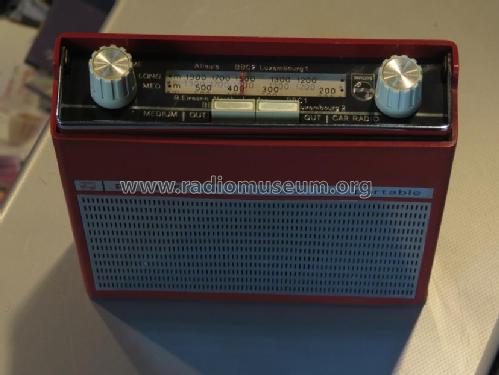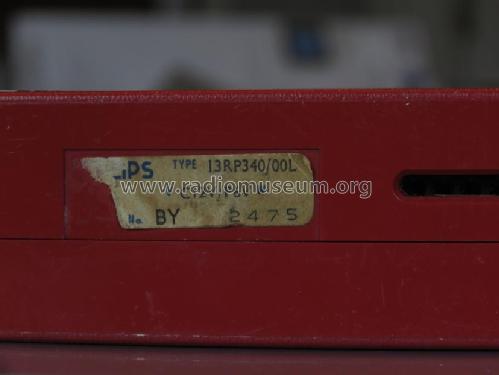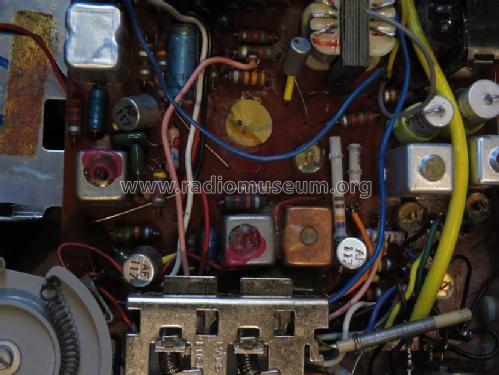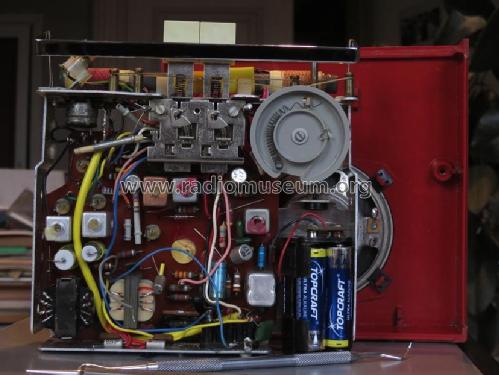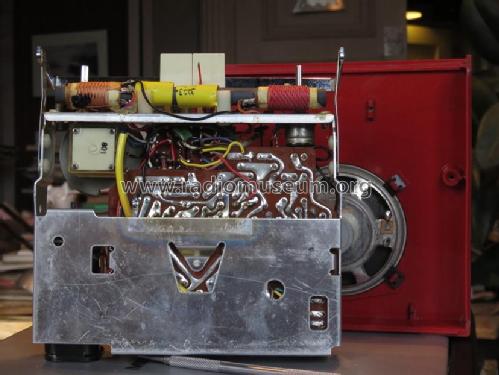All Transistor Car Portable 13RP340 /00L /05L
Philips Electrical, Lamps, Industrial - Miniwatt; London
- Country
- Great Britain (UK)
- Manufacturer / Brand
- Philips Electrical, Lamps, Industrial - Miniwatt; London
- Year
- 1973 ??
- Category
- Broadcast Receiver - or past WW2 Tuner
- Radiomuseum.org ID
- 308990
Click on the schematic thumbnail to request the schematic as a free document.
- Number of Transistors
- 6
- Main principle
- Superheterodyne (common); Export model
- Tuned circuits
- 5 AM circuit(s)
- Wave bands
- Broadcast (MW) and Long Wave.
- Power type and voltage
- Batteries / addl. power jack / 4 x 1,5 / 12 DC Volt
- Loudspeaker
- Permanent Magnet Dynamic (PDyn) Loudspeaker (moving coil)
- Material
- Plastics (no bakelite or catalin)
- from Radiomuseum.org
- Model: All Transistor Car Portable 13RP340 /00L /05L - Philips Electrical, Lamps,
- Shape
- Very small Portable or Pocket-Set (Handheld) < 8 inch.
- Dimensions (WHD)
- 162 x 180 x 45 mm / 6.4 x 7.1 x 1.8 inch
- Notes
-
As a self-contained portable radio it is powered by 4 internal 1,5V dry batteries. As a car radio it slides into a mounting tray and connects to a car aerial, car loudspeaker (6"x 4" elliptical) and 12V car battery.
See also Philips (GB) model P3G38T (with different transistors and internal power supply).
-----------------------------------------------------------------------------------------------------------------------
Kleines tragbares Radiogerät. Es kann im Auto eingeschoben werden und wird dort zum Autoradio.
Siehe auch Philips (GB) Modell P3G38T (mit unterschiedlichen Transistoren und interner Betriebsspannung).
- Literature/Schematics (1)
- -- Schematic
- Author
- Model page created by Bruce Cohen. See "Data change" for further contributors.
- Other Models
-
Here you find 427 models, 305 with images and 286 with schematics for wireless sets etc. In French: TSF for Télégraphie sans fil.
All listed radios etc. from Philips Electrical, Lamps, Industrial - Miniwatt; London
Collections
The model All Transistor Car Portable is part of the collections of the following members.
Forum contributions about this model: Philips Electrical,: All Transistor Car Portable 13RP340 /00L /05L
Threads: 1 | Posts: 1
Es ist nicht das, was man sonst tut mit seinen kleinen Lieblingen: zuschlagen. Wer bei der Demontage die AF117 sieht und merkt, dass sich gar nichts tut, der kann gleich die Abschirmung durchzwicken. Das hilft oft. Er kann auch zuerst einmal kräftig gegen die Gehäuse schlagen. Meist zeigt das den Defekt gut an, das heisst, der Schlag repariert ihn vorübergehend, weil im Inneren die filigranen Fäden der Zinnfasern zerbrechen.
Das Radio ist am Anfang völlig stumm. Ein Schlag auf T2 und es beginnt zu rauschen und zu knistern. Empfang bleibt aber noch aus. Ein paar Mal Knallen auf T1 – der Empfang setzt ein, kristallklar. Schon nach kurzer Zeit wird er ‚trüber‘, dumpfer. Die Abschirmung von T1, T2 und T3 abgezwickt – vorläufig ist das Radio repariert.
Zinnfasern und der Radioreparateur – jedes Mal eine wirklich wundersame Begegnung.
Bruce Cohen, 07.Mar.19

